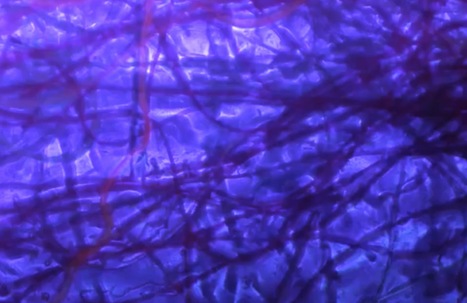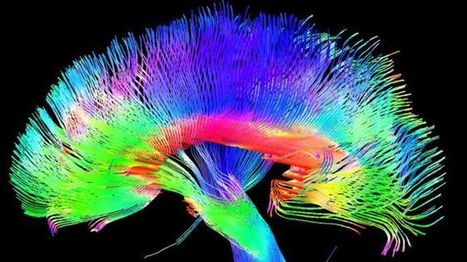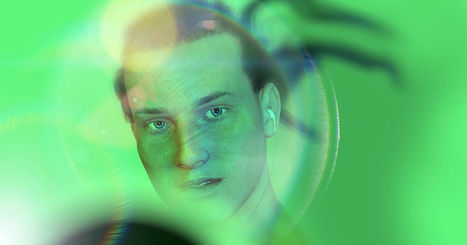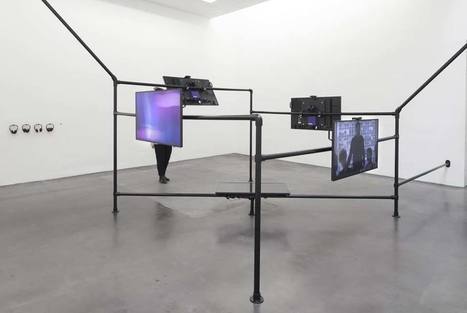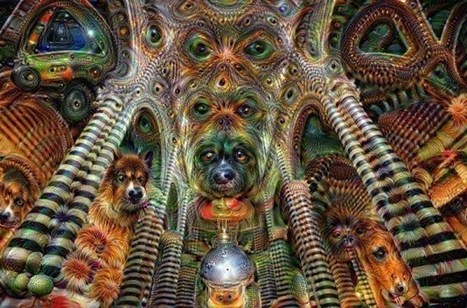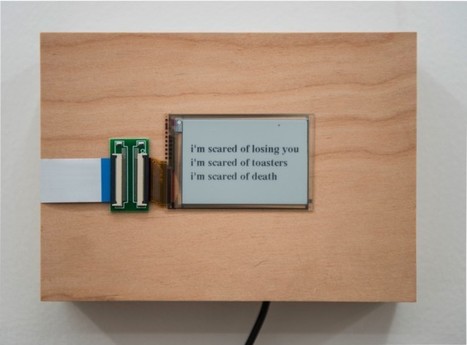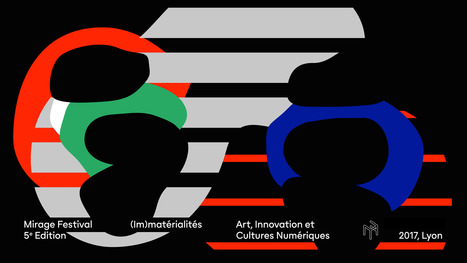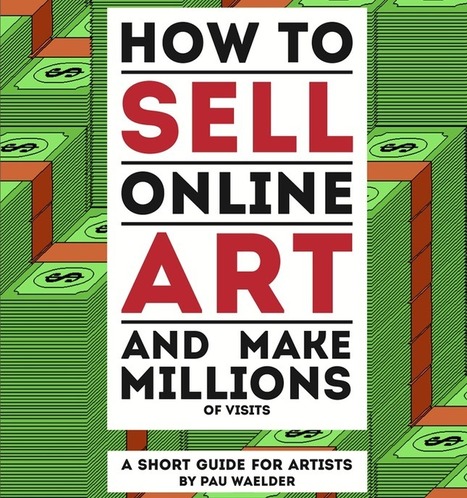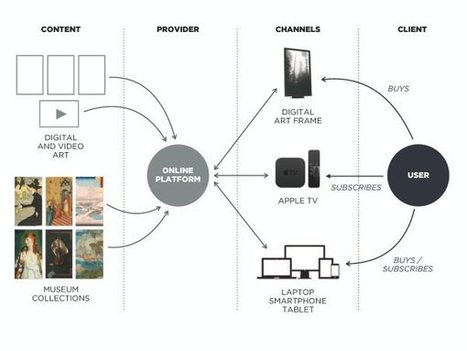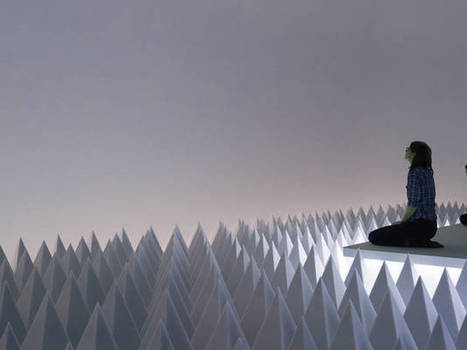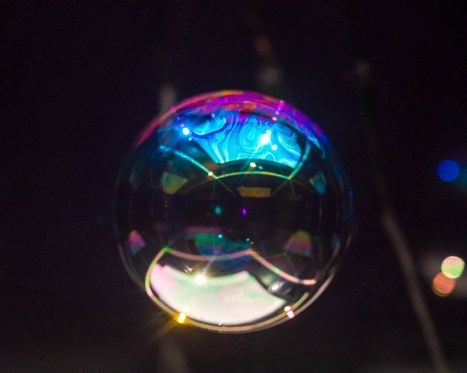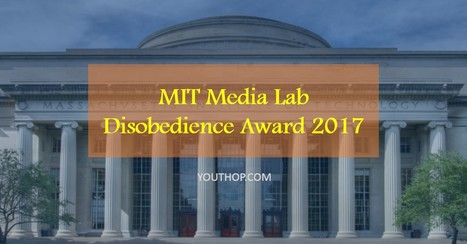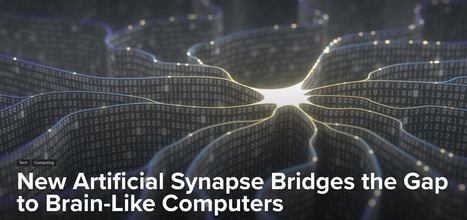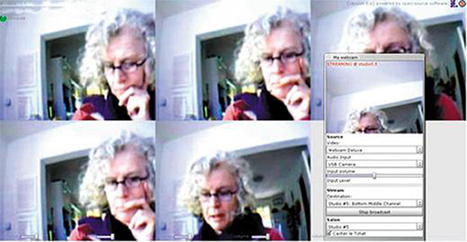Découvrez les contenus exclusifs pop, art & geek d’ARTE Creative, la nouvelle offre d’ARTE dédiée à la culture contemporaine !
Get Started for FREE
Sign up with Facebook Sign up with X
I don't have a Facebook or a X account

 Your new post is loading... Your new post is loading...
 Your new post is loading... Your new post is loading...
The cognitive scientist Daniel Dennett believes our brains are machines, made of billions of tiny "robots" - our neurons, or brain cells. Is the human mind really that special?
In an infamous memo written in 1965, the philosopher Hubert Dreyfus stated that humans would always beat computers at chess because machines lacked intuition. Daniel Dennett disagreed.
A few years later, Dreyfus rather embarrassingly found himself in checkmate against a computer. And in May 1997 the IBM computer, Deep Blue defeated the world chess champion Garry Kasparov. Many who were unhappy with this result then claimed that chess was a boringly logical game. Computers didn't need intuition to win. The goalposts shifted.
On a very warm afternoon in April, the image of a bald young white man’s head floated on a gray screen at the Kitchen, in Chelsea. The man spoke in a tone that shifted worryingly between aggressive and confessional, punctuating his lines with two disembodied hands. “And I could have been your haruspex, sexy,” he said at one point, snarling. “I could have read omens in your extricated liver.” There were pale red marks beneath his eyes, a five-o’clock shadow on his jaw.
The talking man was the creation of the British artist Ed Atkins, who purchased the avatar for five hundred dollars from a Web site called Turbosquid and brought it to life using the software program faceshift, which maps the movements of facial expressions. This is the same type of object-recognition technology that is now used by Microsoft, whose Windows Hello program lets you unlock computers by looking at them, and by apps including Snapchat, which has adopted motion capture to adorn users’ images with flower crowns or dog faces.
Hello World!, is a survey of contemporary art focusing on the global digital revolution and its impact on our culture and economy, as well as human identity and behaviour. The exhibition in Kiasma, Museum of Contemporary Art, Helsinki brings together 35 artists from 13 countries representing three generations, from the ‘60s to the ‘80s. The ARS17+ Online Art website at arsplus.fi showcases a selection of new net art as part of the ARS17 exhibition at Kiasma.
6 expériences de réalité virtuelle qui en disent long sur son potentiel - overview Kaléidoscope 2017La réalité virtuelle est souvent associée au jeu vidéo. Pourtant, de nombreux artistes produisent des « expériences » immersives, souvent courtes, dans lequel l’utilisateur n’agit pas, ou très peu. Mardi 1er mars, une trentaine étaient présentées à la Gaîté Lyrique, à Paris, dans le cadre de Kaléidoscope. Cet événement, entièrement consacré à ce type de production, faisait une halte dans la capitale française avant de poursuivre sa tournée internationale à Tel Aviv, Stockholm, Tokyo ou encore Melbourne.
From
time
Home button, camera, front camera, click; it takes four actions and less than five seconds to capture a selfie on a standard iPhone. Perhaps then it is no surprise that we take an estimated one million a day, often risking our careers as well as our lives and the lives of those around us in order to get the perfect self-portrait.
From
qz
You start by picking up the knife, or reaching for the neck of a broken-off bottle. Then comes the lunge and wrestle, the physical strain as your victim fights back, the desire to overpower him. You feel the density of his body against yours, the warmth of his blood. Now the victim is looking up at you, making eye contact in his final moments.
Science-fiction writers have fantasised about virtual reality (VR) for decades. Now it is here—and with it, perhaps, the possibility of the complete physical experience of killing someone, without harming a soul. As well as Facebook’s ongoing efforts with Oculus Rift, Google recently bought the eye-tracking start-up Eyefluence to boost its progress towards creating more immersive virtual worlds. The director Alejandro G Iñárritu and the cinematographer Emmanuel Lubezki, both famous for Birdman (2014) and The Revenant (2015), have announced that their next project will be a short VR film.
As the consumer-oriented liberalism of Bill Gates and Steve Jobs gave way to the technological authoritarianism of Elon Musk and Peter Thiel, this strange foundation paved the way for “neoreaction,” or, in a distorted echo of Eliezer Yudkowsky’s rationalist vision, the “Dark Enlightenment.
Science fiction tells us that a change in a past event, caused by the intervention of a time traveler, will open up a parallel timeline that leads to an alternate present. The example that comes to mind, for some reason, is Back to the Future, Part II. After an unexpected disturbance in the spacetime continuum, Marty McFly visits a world in which Biff Tannen, his father’s high school bully, has gone from unscrupulous small-time businessman to a replica of our current president. ...
Le NøøMuseum est une oeuvre d’art numérique immersive et interactive développée par Yann Minh depuis plus de dix ans.
C’est un musée dématérialisé de science-fiction imaginaire consacré à la préhistoire de la cyberculture, et qui étend son réseau de galeries hypermédias connectées, dans différents secteurs du cyberespace. Les premières NøøGaleries ont été installées en 2004, dans l’espace vidéoludique du jeu Unreal-Tournament sous forme de “map” personnalisées, accessibles en réseau multijoueur.
Using 40 Raspberry Pis attached to 40 Adafruit e-ink displays, New York conceptual artist Zach Gage turned Google Search’s autocomplete function into poetry. Each “Glacier” is a unique poem generated…
The installation’s screens refresh daily as the Pis check Google for changes and update accordingly. For some search phrases, however, it’s likely that they will not be altered for years or even décades. ...
Le Mirage Festival est un cocktail magique qui se sirote pendant quatre jours et quatre nuits. Subtil équilibre d’expositions, de conférences et de soirées électro, la recette 2017, intitulée "(Im)atérialités", promet des effets surprenants : donner accès à des choses habituellement invisibles, perturber les limites de la perception, envoûter les sens, titiller la réalité… Ses ingrédients principaux sont des couleurs, du son et du mouvement… Konbini vous présente des pépites repérées dans la programmation de cette 5e édition, qui se déroule jusqu'au 12 mars à Lyon.
Rendre visible l’immatériel, c’est le jeu auquel se prêtent les artistes présentés dans le parcours d’exposition (accessible à tous, gratuitement) qui s’installe aux Subsistances, à la Taverne Gutenberg, au Musée des Beaux-Arts et à l’École des Beaux-Arts de Lyon. "Le numérique est hyper présent dans notre quotidien, l’idée cette année était d’explorer sa présence, de dévoiler l'intangible", nous explique Jean-Manu Rosnet, cofondateur du festival...
Pau Waelder is a researcher, art critic and curator who recently finished his PhD about the art market, its displacement on internet platforms and the interactions between contemporary art and New Media Art. His research acknowledge the explosion of the Post-Internet Art, as example of an artistic sector connected to New Media Art that stimulated the interest of the traditional art market.
Post-Internet Art has been for many a short parenthesis, a phenomenon which is already obsolete, but it setted a precedent of a successful artistic production for the art market, in the general context of New Media Art, even if some artists of the new generation does not recognize himself in the New Media Art field. From a different perspective, this interview also focuses on the new online resources for buying art and the new forms of distributions of digital contents.
Colliding Worlds: How Cutting-Edge Science is Redefining Contemporary Art tells the story of how artists, scientists and technologists are working together to create a new art movement. It is a journey behind the scenes into a bold new world and features a close look at the artists themselves: their creativity and what drives them, their struggles, and the drama of developing a new art form. Just like previous avant-garde art movements this one is up against a hostile art establishment intent on maintaining the status quo. Distrustful of science and technology and of how its products fit gallery norms, the art establishment remains mired in the last century.
Science, engineering, computers, and algorithms inspire these artists, just as nature, hate, love and death used to inspire artists. Instead of paint and chisel, today’s artists are at home with the new twenty-first century electronically-based media. With it they strive to depict the wonders of our age of information – representing huge data sets aesthetically, looking into what it could mean in the future when robots interact with humans, sculpting with sound, folding together concepts of art with physics, using living matter to manipulate inert materials to make new and beautiful forms, and investigating what it means to be human when we can have chip implants, gene transplants, and organs produced by 3D printers inserted into our bodies. |
Il y a vingt ans, Ben Goertzel, un scientifique américain, inventait le principe de l'intelligence artificielle générale (IAG). En 2012, il s'est fixé un nouvel objectif : créer le premier enfant-robot doté de l'intelligence d'un enfant de 3 ans, avec la capacité d'apprendre. Y parviendra-t-il ? Ben Goertzel a créé sa société, Open Cog, à Hongkong, où il poursuit depuis ses travaux avec son équipe.
We all glow. All living cells of bacteria, plants as well as (human and non-human) animals emit biophotons, extremely weak light emissions which cannot be perceived by the naked eye and are used in cell-to-cell communication in living systems. Instruments like photomultipliers tubes (PMT), however, are such sensitive detectors of light that they can detect individual photons.
Although the transformation of the functional state of the living organism into sound was an important dimension of the work, the artists and designers were also interested in looking at the processes and authoritative gestures that legitimise the collection of personal information and how informed consent is attained and defined.
M. Laurent Alexandre (Entrepreneur, DNA vision) au Senat le 19.01.2017 pour parler de l'impact de l'Intelligence Artificielle sur la société et l'économie française.
From
cdm
Modular synthesizers present some beautiful possibilities for sound design and composition. For constructing certain kinds of sounds, and certain automated rhythmic and melodic structures, they’re beautiful – and endure for a reason.
Since the early 2010s, the contemporary art market has been showing signs of a renewed interest in digital media. On the one hand, several online marketplaces have been launched with the support of investor groups that include leading contemporary art galleries. On the other hand, a growing number of startups have been developing forms of accessing and collecting art in a digital format by means of mobile apps, streaming services and digital frames. Most of these business initiatives have been launched in the past four to five years and are currently exploring models of selling art which have yet to prove their profitability in the context of a market that is changing rapidly, but at the same time holding on to established structures and hierarchies.
Virtual Reality productions are on the rise. But is the medium even available? How can we start thinking about the accessibility and democratization of immersive production, creation and consumption?
About the Speaker:
Last year, the Solomon R. Guggenheim Museum captured the public’s attention with a working, solid gold toilet installed in one of its restrooms. This year, they're are going for something a little more subtle: A “desert” that’s acoustically soundproofed to prevent anything but the lowest of ambient sounds. PSAD Synthetic Desert III, as the installation is formally titled, is the creation of West Coast artist Doug Wheeler, who originally conceived the idea nearly 50 years ago. Working in collaboration with the museum, Wheeler is finally realizing the project after all this time.
Final chapter of the report from the Artefact festival at STUK in Leuven (this way for the previous posts, ladies and gentlemen —> Dataghost 2. The kabbalistic computational machine and Artefact festival: Magic and politics.) This year, the event looked at magic, its meaning, reach and role in contemporary culture and society. The topic was analyzed through various lenses: entertainment, politics, finance, technology, etc.
The relationship between technology and magic is a particularly puzzling and interesting one. You’d think that progress in science and technology would automatically mark the demise of our interest for magical thinking and occult forms of knowledge. Far from it. It seems that humans have an inherent need to leave some space in their world for the unaccountable and the supernatural. That’s why progresses in science and technology have often been accompanied by the arrival or renewal of paranormal phenomena. The advent of photography, for example, saw a rise in the popularity of spiritism and photography was even used as a proofthat ghosts and other spiritual entities did indeed exist.
The director of the Digital Art Museum in Berlin breaks down the promise and limitations of virtual reality in this interview with Artspace’s Will Fenstermaker.
In the Whitney Museum’s first biennial of its new Chelsea home, the most controversial work is one of new media: Jordan Wolfson’s Real Violence (2017) is experienced through virtual reality headsets. Via Oculus Rift, the viewer is forced out of the museum and onto a New York street, where the artist waits with a baseball bat. Before viewers have time to accustom themselves, Wolfson swings, repeatedly wailing the bat and stomping his foot into the face of an animatronic doll—rendered lifelike through post-processing—which spouts too-human blood. Back in the museum, metal handrails help deter viewers from looking away. All of this is overlaid, through headphones, with the recitation of a Hebrew prayer. ...
In the 1980s, Joi Ito traded in library tables at the University of Chicago for turntables at Chicago’s Smart Bar. But his attempt to evade academia wouldn’t stick.
The two-time college dropout became director of the MIT Media Lab in 2011, making the 50-year-old an academic administrator at one of the most renowned universities in the world. Before that, he was an entrepreneur who started a number of his own companies and invested in the likes of Flickr, Twitter and Kickstarter.
A proud supporter of “responsible disobedience” — the lab is awarding its first $250,000 Disobedience Award this July — Ito is in Chicago Wednesday as a Chicago Ideas speaker. He will appear with IDEO Chicago Executive Portfolio Director Neil Stevenson at an event to discuss Chicago’s role in “embracing culture, art and experimentation.”
Blue Sky talked to Ito — whose interdisciplinary media lab focuses on the creative use of digital technology, sciences, arts and design — about the disobedience mindset....
From AlphaGo’s historic victory against world champion Lee Sedol to DeepStack’s sweeping win against professional poker players, artificial intelligence is clearly on a roll.
Part of the momentum comes from breakthroughs in artificial neural networks, which loosely mimic the multi-layer structure of the human brain. But that’s where the similarity ends. While the brain can hum along on energy only enough to power a light bulb, AlphaGo’s neural network runs on a whopping 1,920 CPUs and 280 GPUs, with a total power consumption of roughly one million watts—50,000 times more than its biological counterpart.
Extrapolate those numbers, and it’s easy to see that artificial neural networks have a serious problem—even if scientists design powerfully intelligent machines, they may demand too much energy to be practical for everyday use.
Annie Abrahams est identifiée comme une artiste précurseur liée à l’Internet et c’est sans doute sur la base de protocoles que son travail pourrait être défini. Rassembler des performers, d’âges, personnalités et milieux diversifiés, les mettre en frottement les uns avec les autres et étudier, analyser ce qui en ressort. Il s’avère cependant que ce ne sont pas les conditions d’existence de la performance même qui l’intéressent, ce seraient plutôt les espaces de liberté qui émergent et l’appropriation qu’en font les performers.
Annie Abrahams le dit simplement, elle n’est pas performeuse, elle étudie les conditions d’évolution et d’existence des corps en performance sur Internet. La performance fait usage de protocoles, car elle implique de façon indispensable de situer dans le temps les différentes actions et étapes de son déroulement... |



